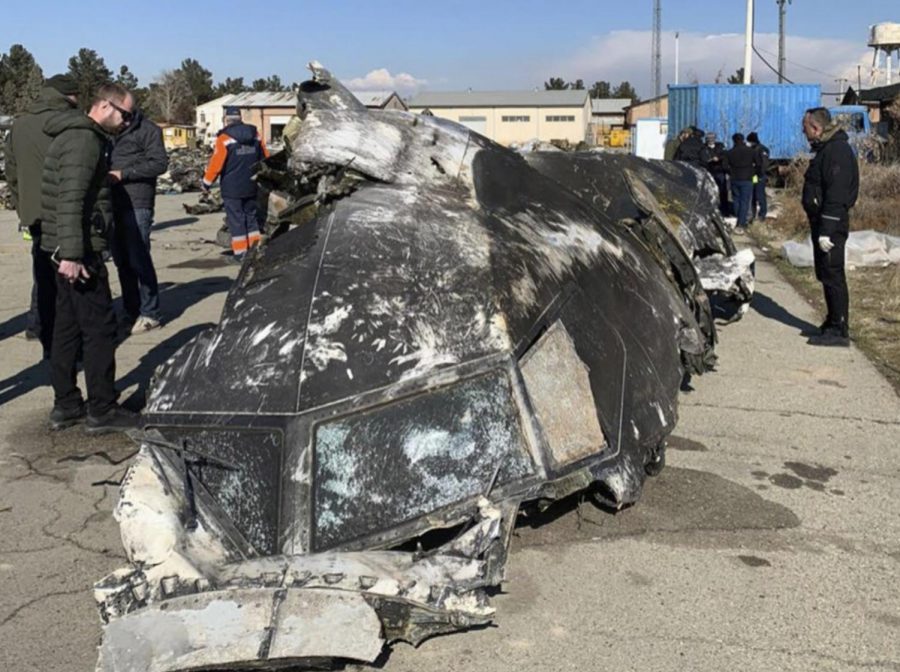Ukrainian Jetliner Shot Down and Nuclear Conversations Intensify Following the Death of Iranian General Qasem Soleimani
January 14, 2020
Following attacks staged by an Iraqi militia on the U.S. embassy in Baghdad, for which Trump has blamed the Iranian state, President Trump gave orders to kill Qasem Soleimani, commander of the Iranian Quds Force. The attack, which many have labeled an “assassination,” occurred on January 3rd early this year. This is not the first time he has been a target, however, for many Arab and Israeli forces have also attempted to kill him in the past. Following the assassination, the Iraqi Prime Minister indicated that Soleimani was killed while delivering an Iranian message to Iraq per a peace-keeping discussion between Iran and Saudi Arabia that was mediated by Iraq. This statement runs counter to that propagated by President Trump, who claimed that Soleimani was plotting attacks on 4 U.S. embassies before he died. However, a statement made by Adam Smith, who is the Chairman of the House Armed Services Committee, brings into question this claim. He told the media that there was no evidence at a White House briefing last Wednesday that supported the narrative that Soleimani had been plotting an attack on a U.S. embassy. Regardless of whether or not he was actively plotting an attack, it is certain that Trump considered both Soleimani’s past attacks against Americans and also the potential for this assassination to be a form of deterrence when he made this decision, which lacked congressional consent.
Scope of Soleimani’s Violent Influence
Bloomberg’s Bobby Ghosh describes Soleimani as the most dangerous individual in the Middle East, and the second most powerful individual after his Iranian Supreme Leader, Ali Khamenei. Soleimani is a “spider in the middle of a complex web,” put Bobby Ghosh. Surely, his influence was not constrained to Iranian borders. He had proxy militias in countries including Yemen, Gaza, Iraq, and Lebanon, and these forces have been known to target American military sites. Christopher Harmer, who is an analyst at the Institute for the Study of War– a Washington think-tank, has once called him “a more stately version of Osama bin Laden.” So without a doubt, Soleimani was a long-time enemy of the U.S.
Iranian Retaliation and a Civilian Jetliner Shot Down
Iran was inevitably going to respond to the killing of Soleimani; however, the intensity of this retaliation was, for some time, in question. This question was answered on January 8th when Iran targeted US military sites in Iraq with missiles. There were no American casualties. Given this retaliation, Iran was on high-alert for an American response, which devastatingly culminated with Iran accidentally targeting a civilian airliner with missiles. The jetliner, which had been properly following its route, had just taken off from Tehran and was traveling to Ukraine. 176 civilians died. Many were Iranian students studying in Canada.
In the aftermath, the Iranian government cited mechanical failure as the cause of the crash, and there is evidence that immediate responders to the crash site mishandled evidence, which was likely with the intent of reducing the pile of evidence that blamed Iran for the catastrophe. However, as the pile grew and the international community began blaming Iran, they finally announced that, after 3 days, they had accidentally shot down the airliner. There are many unsettling details about this story: why was a civilian jetliner allowed in this airspace in the first place, considering this would be a possibility?
Consequently, Iranian citizens have flooded streets in Tehran and multiple university campuses, protesting the government, and police have been on riot-control, directing tear-gas at many.
A Nuclear Aftermath
Iran has for a long time been a concern for the U.S. and other world powers on the grounds that it may develop a nuclear arsenal. In response, the 2015 Obama Administration sponsored the Iran Nuclear Deal, which permitted Iran to use nuclear technologies to produce energy but not to create nuclear bombs. The deal, formally titled the Joint Comprehensive Plan of Action (JCPOA), did this by establishing safeguards such as limitations on the amount and type of centrifuges that Iran can develop. On the other end of the deal, Iran would receive fewer economic sanctions from the E.U., U.N., and U.S. However, Washington pulled out of the deal in May of 2018. In the time following this withdraw, Iran has been violating the Nuclear Deal, despite its continued sponsorship by multiple world powers. The killing of Soleimani will likely not translate into progress towards de-escalating this nuclear predicament; in fact, Iran has said that they are in their final stage of violating the deal. What does this mean? For one, this means that Iran will disregard the established sanctions on the degree to which it may enrich its Uranium. To create a nuclear weapon, Uranium must be enriched 90%. Currently, Iran is limited from enriching the Uranium past 3.67%. By disregarding this safeguard, they may enrich the Uranium past this to develop a nuclear weapon. This issue is pressing, for Iran’s acquisition of a nuclear weapon would cause a ripple of global upheaval. As the day’s following this announcement by Iran unfold, the world will have to see how this issue is addressed by Trump.
For Further Reading: (this is a cool thing to include)
https://www.cnbc.com/2020/01/12/iran-braces-for-protests-after-admitting-plane-shootdown.html
https://www.bbc.com/news/world-us-canada-51068560
https://abcnews.go.com/International/wireStory/flaring-tensions-kill-iran-nuclear-deal-end-68190052


